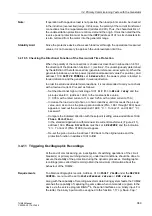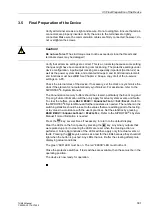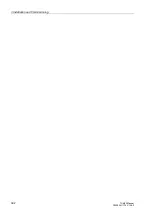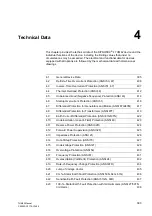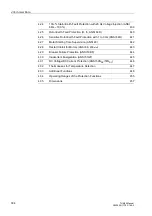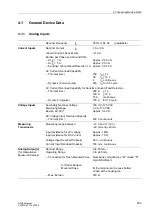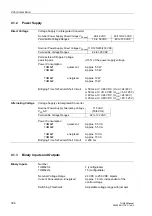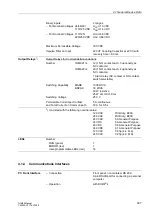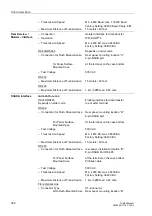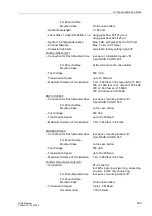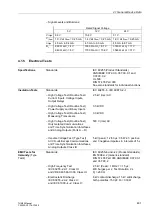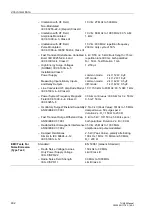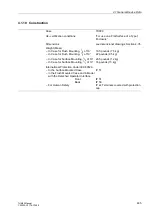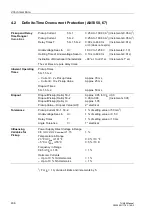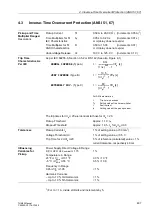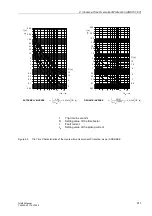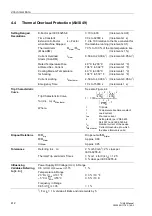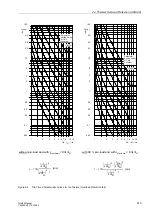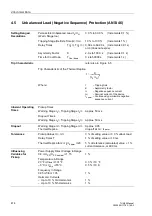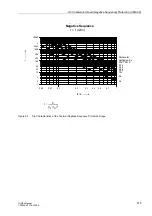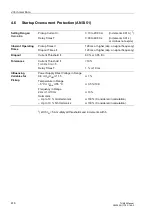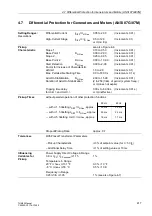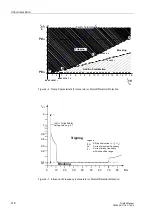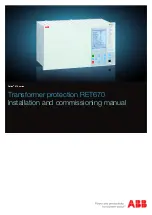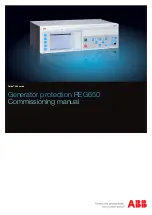
4.1 General Device Data
403
7UM62 Manual
C53000-G1176-C149-3
4.1.6
Mechanical Stress Tests
Vibration and
Shock Stress
During Operation
Standards:
IEC 60255–21 and IEC 60068
– Vibration
Sinusoidal
IEC 60255–21–1, Class 2
10 Hz to 60 Hz:
±
0.075 mm amplitude;
IEC 60068–2–6
60 Hz to 150 Hz:
1 g acceleration
frequency sweep rate 1 Octave/min
20 cycles in 3 orthogonal axes.
– Shock
Half-sine shaped
IEC 60255–21–2, Class 1
acceleration 5 g, duration 11 ms,
IEC 60068–2–27
3 shocks in each direction of
3 orthogonal axes
– Seismic Vibration
Sinusoidal
IEC 60255–21–3, Class 1
1 Hz to 8 Hz
±
3.5 mm amplitude
IEC 60068–3–3
(horizontal axis)
1 Hz to 8 Hz:
±
1.5 mm amplitude
(vertical axis)
8 Hz to 35 Hz:
1 g acceleration
(horizontal axis)
8 Hz to 35 Hz:
0.5 g acceleration
(vertical axis)
Frequency Sweep Rate1 Octave/min
1 cycle in 3 orthogonal axes
Vibration and
Shock Stress
During Transport
Standards:
IEC 60255–21 and IEC 60068–2
– Vibration
Sinusoidal
IEC 60255–21–1, Class 2
5 Hz to 8 Hz:
±
7.5 mm Amplitude;
IEC 60068–2–6
8 Hz to 150 Hz:
2 g acceleration
Frequency sweep rate1 Octave/min
20 cycles in 3 orthogonal axes.
– Shock
Half-sine shaped
IEC 60255–21–2, Class1
Acceleration 15 g, duration 11 ms,
IEC 60068–2–27
3 shocks in each direction of
3 orthogonal axes.
– Continuous Shock
Half-sine shaped
IEC 60255–21–2, Class 1
Acceleration 10 g, duration 16 ms,
IEC 60068–2–29
1000 shocks in each direction of
3 orthogonal axes.
4.1.7
Climatic Stress Tests
Ambient
Temperatures
– Type tested
(acc. IEC 60068–2–1 and –2,
Test Bd for 16 h)
–13 °F to +185 °F or –25 °C to +85 °C
– Temporarily allowed operating temperature
(tested for 96 h)
– 4 °F to +158 °F or –20 °C to +70 °C

